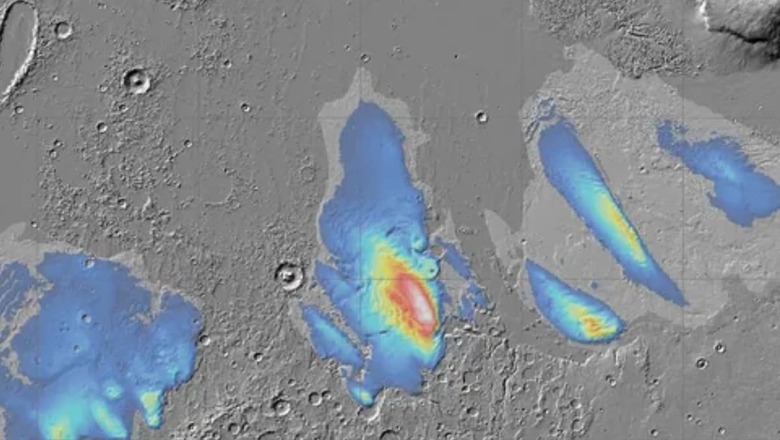
views
It might be 140 million miles away, but Mars is pretty much considered to be located in Earth’s planetary backyard. Over the last few decades, humankind has managed to send over 20 missions, including orbiters, landers, and rovers, to survey the dusty terrain, leading to several astonishing discoveries. In a recent one, a new radar survey of the Medusae Fossae Formation region revealed giant, layered slabs of buried water ice, supposedly several kilometres thick. According to Space.com, the European Space Agency (ESA) has recently found enough water to cover Mars in an ocean between 4.9 and 8.9 feet (1.5 and 2.7 meters) deep.
ESA’s Mars Express mission finds water ice
The findings were made by ESA’s Mars Express mission, a veteran spacecraft that has been engaged in science operations around Mars for 20 years now. It is not the first time that such evidence of ice has been found on the equator; the recent discovery is by far the largest amount of water ice detected so far.
Also, the findings match the previous discoveries of frozen water on Mars.
“Excitingly, the radar signals match what we expect to see from layered ice and are similar to the signals we see from Mars’ polar caps, which we know to be very ice-rich,” said the lead researcher, Thomas Watters of the Smithsonian Institution in the United States, in an ESA statement.
Further giving details of the findings, the statement states that the deposits are thick, extended 3.7km (2.3 miles) underground, and topped by a crust of hardened ash and dry dust hundreds of meters thick, further adding that the ice is not a pure block but is heavily contaminated by dust.
While the deposits are located near the equator, the location is more easily accessible to future crewed missions. However, being buried so deep can make accessing the water ice difficult.
Notably, hints of the buried deposits were first detected in 2007 beneath the MFF, up to a depth of 2.5 kilometres (1.6 miles); however, they were not assessed completely. Presently, with new data and new tools, much more has been revealed about the deposits than expected. It is suspected that the MMF formed itself within the past 3 billion years from lave flows and was covered in volcanic ash at the time when Mars was volcanically active.



















Comments
0 comment